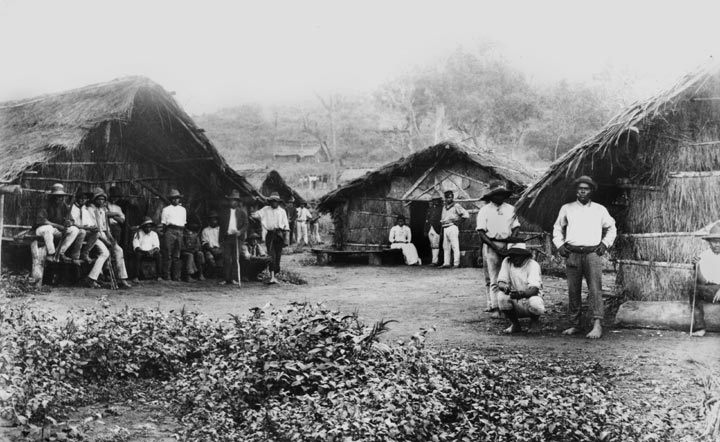 Pacific Islander labourers in the Mackay District, late 1800s
Pacific Islander labourers in the Mackay District, late 1800s
TLF ID R8008
This posed black-and-white photograph shows indentured Pacific Islanders by their grass hut homes, probably on a Mackay sugar plantation in Queensland. Some are seated on logs or rough timber benches and one woman can also be seen. They are dressed in Western-style clothes. More huts can be seen on the cleared rise in the background, while a garden of some description is in the foreground.
